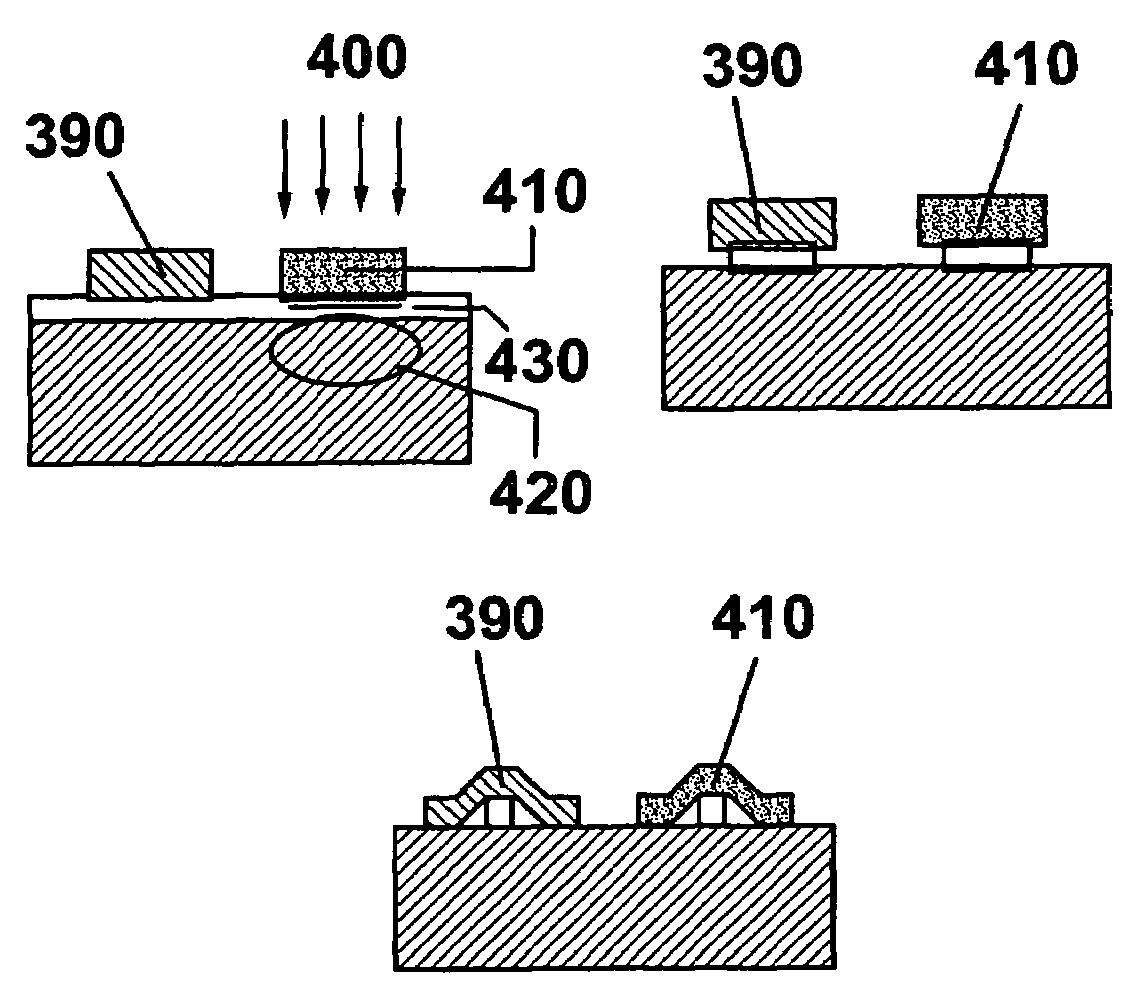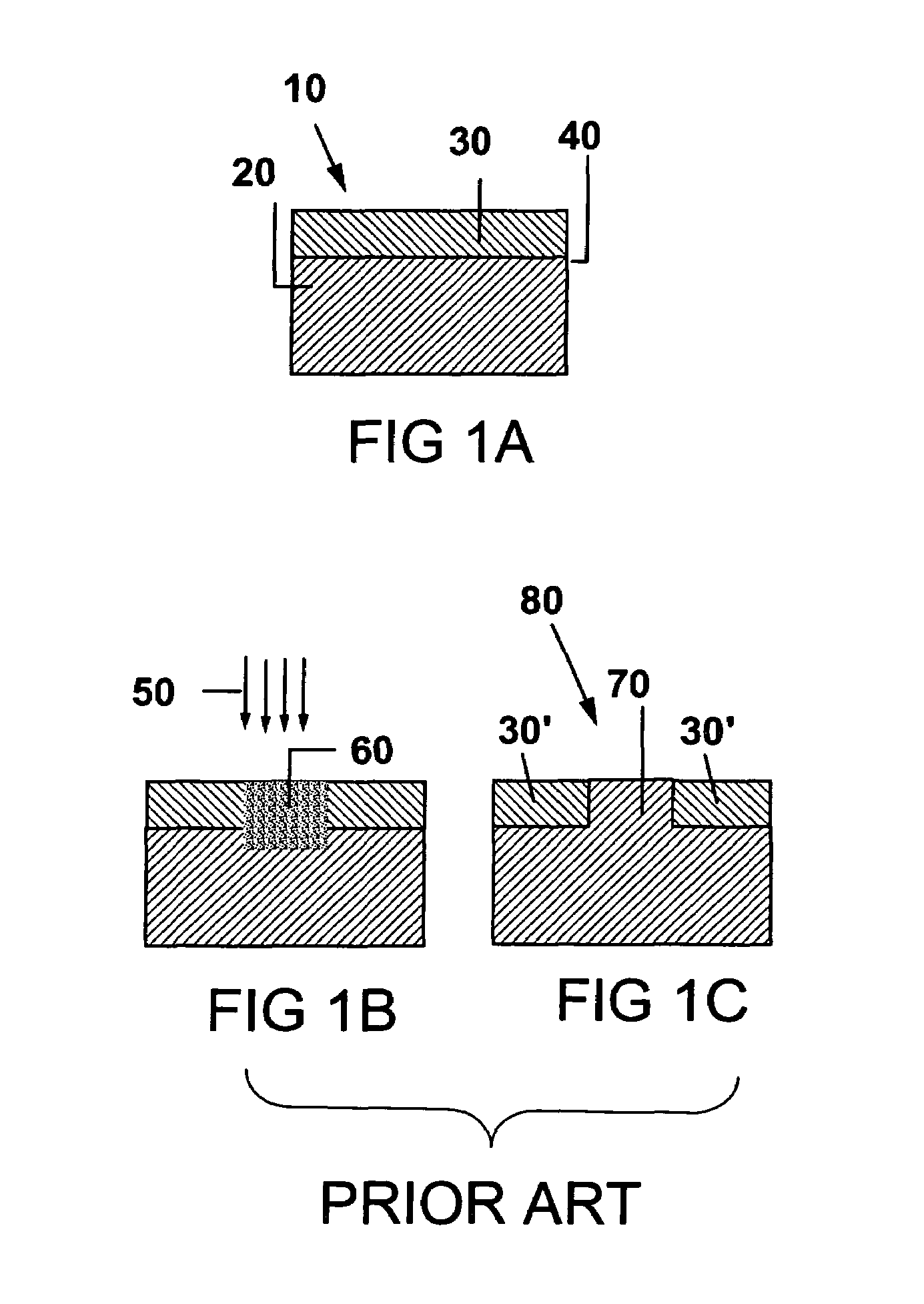Hybrid orientation substrates by in-place bonding and amorphization/templated recrystallization
a hybrid orientation substrate and in-place bonding technology, applied in semiconductor/solid-state device manufacturing, basic electric elements, electric devices, etc., can solve the problems of damage layer interfering with the clean recrystallization of the amorphized region, damaged crystalline layer between the amorphized, damaged crystalline layer, etc., to achieve densification and free amorphized regions
- Summary
- Abstract
- Description
- Claims
- Application Information
AI Technical Summary
Benefits of technology
Problems solved by technology
Method used
Image
Examples
Embodiment Construction
[0046]The present invention, which provides methods of fabricating planar hybrid-orientation substrate structures, will now be described in greater detail by referring to the drawings that accompany the present application. The drawings that accompany the present application are provided for illustrative proposes and thus they are not drawn to scale. In the drawings, which illustrate the process flows of the present invention, reference numbers are not shown for materials (or areas) that are not be affected by the specified processing step. It is understood then that the materials not labeled in a particular step have not changed from the proceeding step(s). Also, in the drawings, like and / or corresponding materials are described with like reference numerals.
[0047]As mentioned above, the methods of the present invention share the following basic steps of: selecting a starting substrate comprising a first single crystal semiconductor layer having a first crystal orientation overlying...
PUM
 Login to View More
Login to View More Abstract
Description
Claims
Application Information
 Login to View More
Login to View More - R&D
- Intellectual Property
- Life Sciences
- Materials
- Tech Scout
- Unparalleled Data Quality
- Higher Quality Content
- 60% Fewer Hallucinations
Browse by: Latest US Patents, China's latest patents, Technical Efficacy Thesaurus, Application Domain, Technology Topic, Popular Technical Reports.
© 2025 PatSnap. All rights reserved.Legal|Privacy policy|Modern Slavery Act Transparency Statement|Sitemap|About US| Contact US: help@patsnap.com



